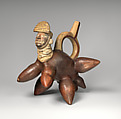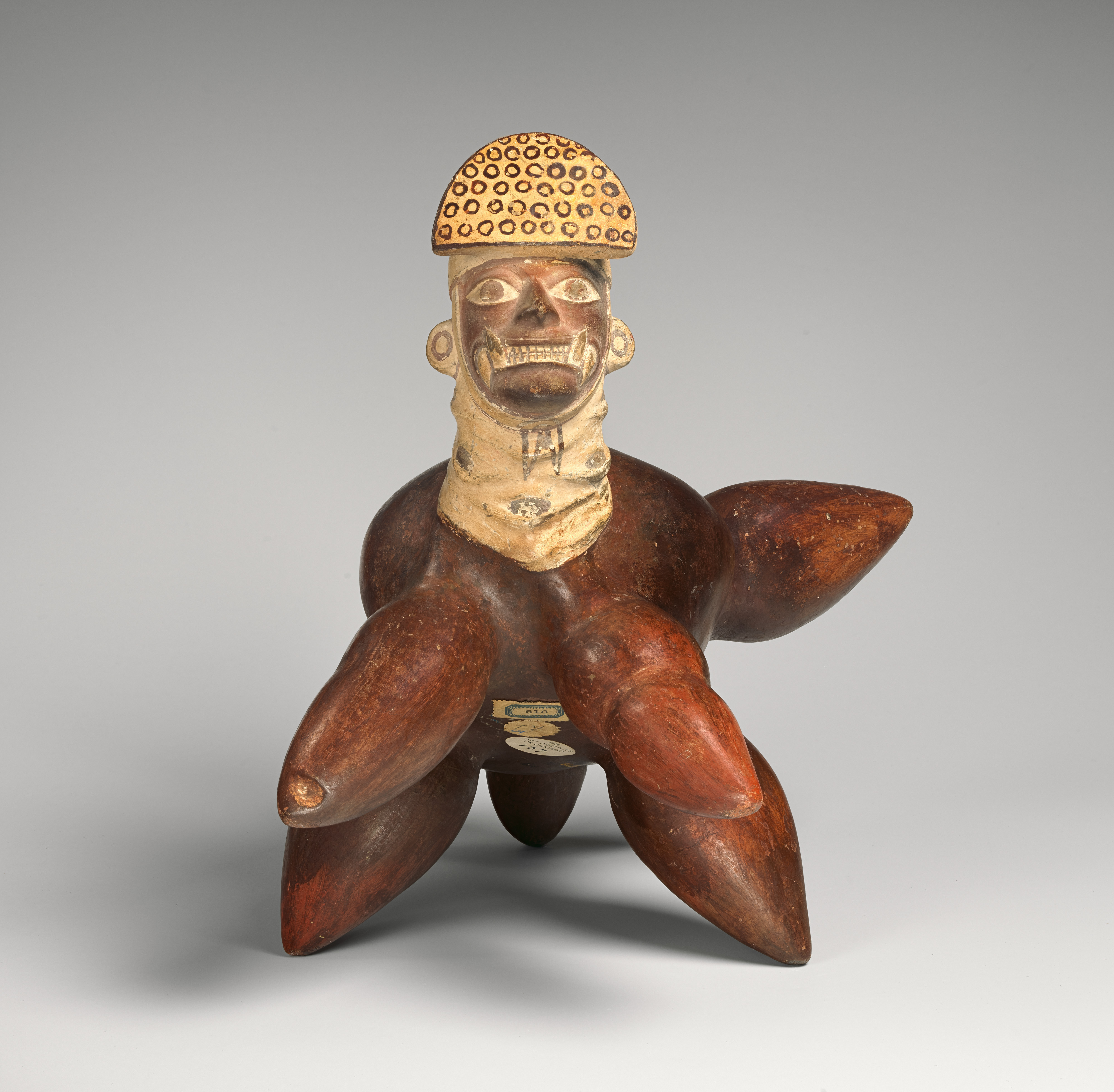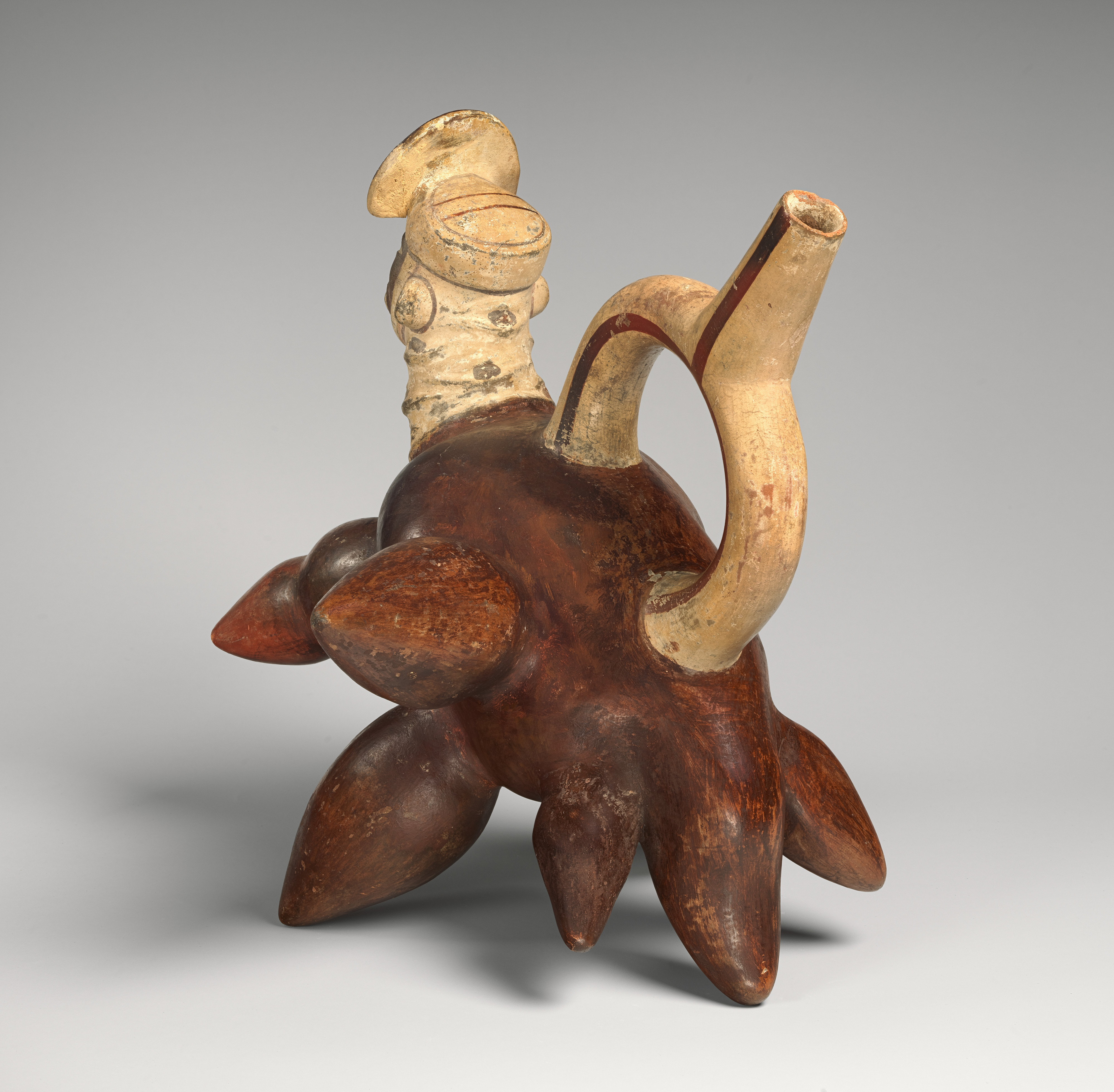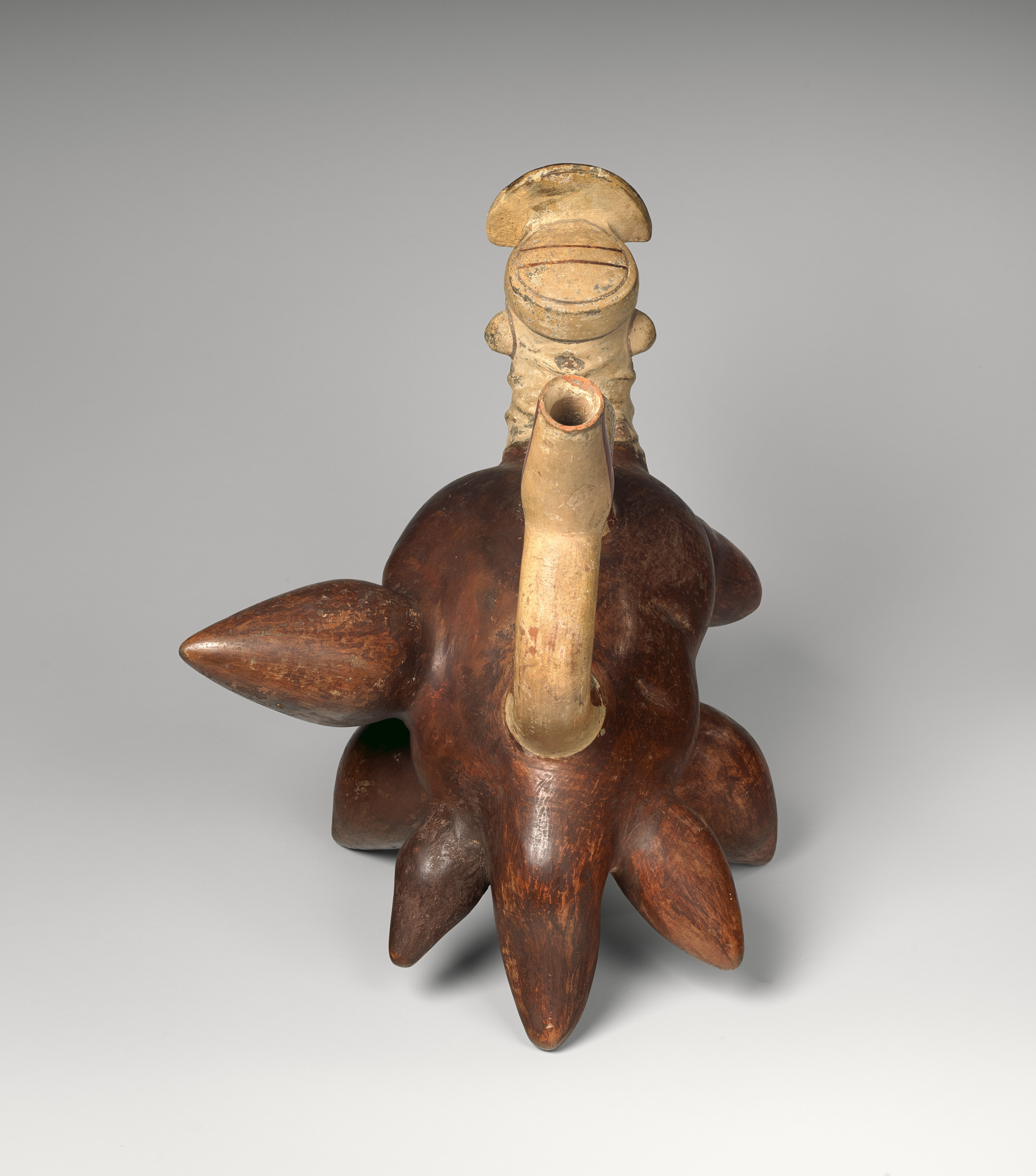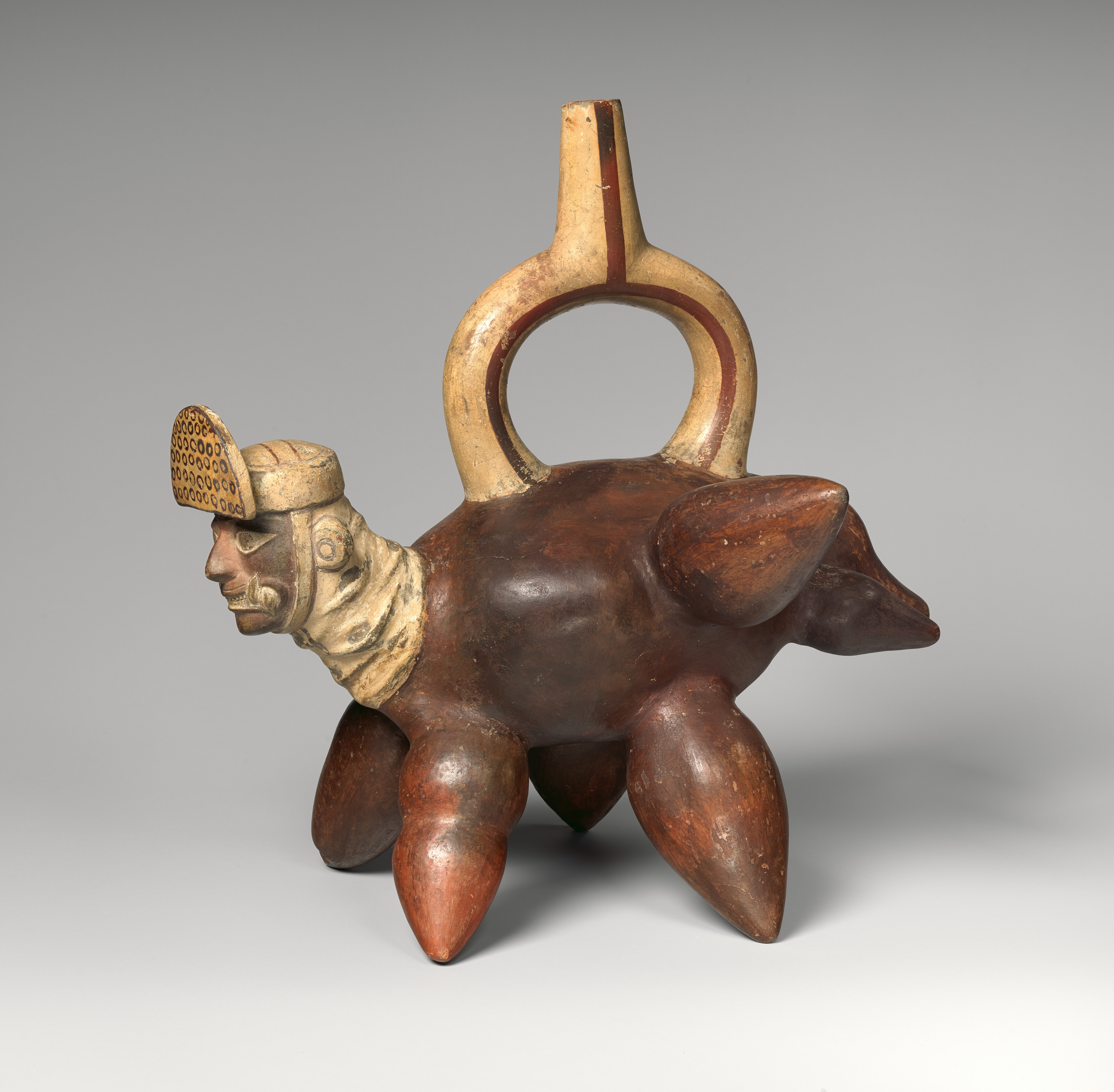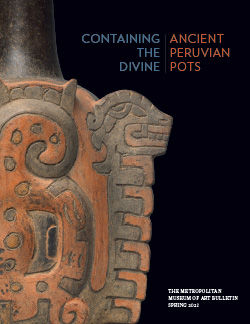Tuber-inspired stirrup-spout bottle
This bottle presents a curious combination of tuber, human, and supernatural beings. Its potato-like trunk sprouts a manioc stem as a neck, recognizable by the growth buds or "eyes," from which a fanged human head with a crescent-shaped headdress emerges. Eight elongated roots of either sweet potato or manioc suggest limbs and tails. The vessel can rest on either the front or back roots; when resting on the front "limbs," it evokes the movement of an arachnid, a crustacean, or an insect. At once food and foe, the sculpture evokes a dangerous creature ready to attack.
In some sculptures (MMA 64.228.26; MMA 1979.206.386), Moche potters blurred the distinction between species, exploiting the concept of pareidolia, the human tendency of finding patterns in nature (Trever 2019). In this bottle, however, the transitions between different anatomical parts are clearly defined. It is easy to determine where one root or tuber ends and the other starts. The challenge resides in understanding the entirety: what or who is depicted? The potter created something that farmers cannot grow: a body that it is at the same time potato, manioc, sweet potato, animal, and human. Similar creations can be found in multiple collections, such as a vessel with limbs in the shape of chili peppers, now in the Museo Larco, Lima (ML003286).
Moche civilization flourished in the North Coast of Peru between A.D. 200 and 850. Ceramics were used to store and cook food, and they were also used in some of the most important rituals of their time. Elaborate vessels such as the present example were used elite residences and temples, some to end up as funerary offerings. The bifurcated spout, called a stirrup-spout after its resemblance to this part of a horse’s saddle, was common on the North Coast from the second millennium B.C. until the arrival of the Spaniards in the sixteenth century A.D.
Hugo C. Ikehara-Tsukayama, Andrew W. Mellon Curatorial/Collection Specialist Fellow, Arts of the Ancient Americas, 2022
References and Further Reading
Castillo, Luis Jaime, Cecilia Pardo, and Julio Rucabado. Moche y sus vecinos: Reconstruyendo identidades. Lima: Museo de Arte de Lima, 2016.
Donnan, Christopher B. "Moche State Religion," in New Perspectives on Moche Political Organization, edited by Jeffrey Quilter and Luis Jaime Castillo, pp. 47-69. Washington D.C.: Dumbarton Oaks Research Library and Collection, 2010.
Trever, Lisa. "A Moche Riddle in Clay: Object Knowledge and Art Work in Ancient Peru." The Art Bulletin, Vol 101, No 40 (2019), pp. 18-38.
Due to rights restrictions, this image cannot be enlarged, viewed at full screen, or downloaded.
This artwork is meant to be viewed from right to left. Scroll left to view more.
